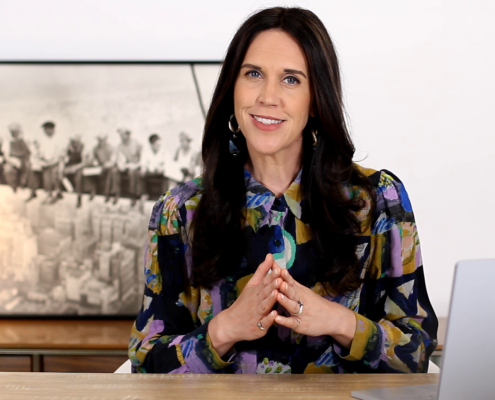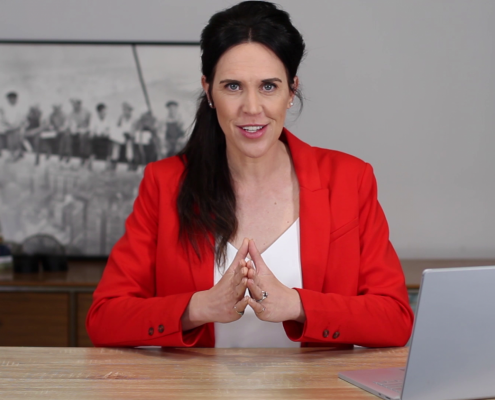DIRECTORS CAN INFLUENCE THE MENTAL HEALTH OF THE ORGANISATION, THROUGH THEIR RELATIONSHIP WITH THEIR CEO
In this 3-part series I look at:
- What is mental health, and how can investing in protecting, promoting and supporting it contribute to your bottom line?
- How can the board govern mentally healthy workplaces?
- How can the board have a positive impact on the mental health of the business, via their relationship with the CEO?
WHY BUSINES LEADERS SHOULD READ THIS POST
It is common argument that active leadership in the workplace is required in taking mental health seriously, and this leadership couldn’t be any significant than that which is placed on the board of directors.
It is my hypothesis that if directors have a positive influence on the mental health of their CEO, they will indirectly have a positive influence on the way the CEO manages the mental health of his/her leadership team, and this then has the potential to create a chain reaction throughout the organisation.
As directors, you have the opportunity – no, I’d call it the privilege – to use your influence to change attitudes about mental healthClick To TweetIn this post, I’m going to outline 5 simple steps directors can take to have a positive influence on the mental health of their CEO.
As always, this post aims to assist you in knowing What to Ask and When to Act.
THE TRUTH IS … IT’S LONELY AT THE TOP
I think it’s generally accepted that most, if not all, CEOs need and want to be perceived as strong, stable and in charge for the good of the company’s brand, stock price and reputation, both internally and externally.
This leaves little room for admissions of anxiety or depression which remain unwelcome indications of weakness or even moral failure.
This silence may cost the organisation in the long run if those at the top do not facilitate a culture in which even the CEO can discuss personal difficulties.
In 2012, Harvard Business Review featured a story about how lonely it is to be the CEO. The authors cited:
“half of CEO respondents reported experiencing feelings of loneliness in their role, and of this group, 61% believe it hinders their performance. First-time CEOs are particularly susceptible to this isolation; nearly 70% of first-time CEOs who experience loneliness report that the feelings negatively affect their performance.”
“Because the leader’s actions reverberate, one person’s isolation becomes a larger problem when it leads to poor decision-making, negativity, fatigue and frustration, not to mention, who wants to work for an unhappy person?”
In addition, one could argue that at least three of the eight areas of work design central to managing psycho-social risks, are inherent in the role of a CEO.
These include: the demands of people’s jobs; the support provided by the organisation, management and colleagues; and relationships at work, or as mentioned above, the lack thereof from a CEO perspective.

Figure 1: Eight areas of work design central to managing psycho-social risks, that, if not properly managed, are associated with poor health, lower productivity and increased incident and sickness absence rates (UK Health & Safety Executive (HSE) standards for work-related stress and the Australian Queensland Government People at Work Project).
If not properly managed, these psycho-social risks are associated with poor health, lower productivity and increased incident and sickness absence rates.
Poor mental health, increases our risk of poor thinking, bad judgement and knee-jerk reactions, and, as I mentioned in my 1st post in this 3-part series, many of you would agree that poor mental health can have a negative impact on the physical safety of your CEO or others in the business, from the CEO’s decision-making.
James Packer (Director, Crown Resorts), John Brogden (Chair, Lifeline), Paul Menzies (QC), Matt Berriman (CEO, Unlockd) are a few Australian public figures in senior corporate roles who have either openly admitted, or discussed, having mental health challenges.
Those who didn’t get help in time and highlight the immense pressures on those at the top include: Carsten Schloter (CEO, Swisscom) who, in 2013, took his own life, after allegedly enduring permanent anxiety from work; Pierre Wauthier (CFO, Zurich Insurance) hanged himself, citing difficulties with stress in his suicide note. Incidentally, less than three years later, the former-CEO of Zurich Insurance, Martin Seen, who worked with Pierre Wauthier, shot himself in his holiday home six months after leaving the company following a series of profit warnings and a botched takeover of British rival RSA.
Unfortunately, as reported in Fortune magazine, statistics about senior executive suicides are scarce, if non-existent … because people tend to hide these tragedies.
5 SIMPLE STEPS DIRECTORS CAN TAKE TO HAVE A POSITIVE IMPACT ON THE MENTAL HEALTH OF THEIR CEO
1. Cultivate a culture of empathy
Having empathy can do wonders for a person who is struggling with maintaining good mental health – and the company at large.
In an article published in the Australian Institute of Company Directors’, Company Director, Associate Professor Samuel Harvey, a research fellow at the Australian Black Dog Institute and leader of the Australian UNSW Workplace Mental Health Research Program, stated that the degree of buy-in from the senior people in an organisation is a significant predictor of how successful any mental health program will be.
By now, you’ve no doubt heard about Olark CEO, Ben Congleton, whose email supporting an employee who asked to take a mental health day went viral after he thanked her for helping to “cut through the stigma of mental health.”
Congleton referred to building a culture where this kind of talk (about mental health) is no big deal… he called it “normalizing the normal”.
When Virgin Money CEO, Jayne-Anne Gadhia, openly spoke about her struggle with post-natal depression in 2017, she might have helped other executives break the taboo that discourages CEOs from discussing mental health struggles – both their own and those of their employees.
Directors can show leadership in this area and talk about their own challenges in maintaining mental health and encourage their CEO to do the same. If these discussions are honest and authentic, it will evoke a comfortable and accepting culture of discussing mental health challenges, and provide a great opportunity for you to be preventative, rather than reactive.
2. Educate yourself on mental health
A survey in 2017 by the Institute of Directors (IoD) showed that 54% of IoD member respondents had been approached by staff suffering mental ill-health.
The survey also found that 72% of IoD members would recommend this person go to their GP; however, with a recent survey by UK mental health organisation, Mind, emphasising the lack of mental health training given to GPs, and almost half of staff nurses having been offered no formal training in this area at all, it is clear that those with mental ill health could be offered more tailored support by employers.
Furthermore, only 15% of IoD member respondents have retained providers such as an employee assistance programme and only 4% would advise them to consult Mental Health First Aid England – around the same number as those saying they simply wouldn’t know what to do.

IoD – A little more conversation
On that note, would you be confident to respond appropriately to your CEO, should they ask you for help? Have you ever asked your CEO, ‘R U Ok?’ Have you ever had concerns that your CEO is not coping, and if so, what would you do?
Do you know what is considered general symptoms of mental ill-health? I mentioned some of these in my 1st post in this 3-part series.
Directors should educate themselves and their board on general mental health, particularly that everyone’s mental health exists on a continuum from positive, healthy functioning at one end through to severe symptoms of mental ill-health at the other. We all move back and forth along this continuum during our lifetime, in response to different stressors and circumstances.

Heads Up
There are resources available for leaders in the organisation to deal with mental health. In 2017, the UK Institute of Directors (IoD) launched a mental health in the workplace campaign which included the creation of a ‘Mental Health Hub’ that aims to help businesses promote good mental health within the workplace. The IoD hub also provides information and advice for managers and workplace leaders that will help spot the signs of mental health problems and know how to help.
Another resource is Australian Heads Up which hosts resources tools and case studies tailed to business leaders.
3. Encourage time-off to rest and rejuvenate
Manfred Kets de Vries, a management professor at INSEAD business school in Fontainebleau, France who holds a degree in psychoanalysis says:
“Instead of constantly being pushed in real time, executives need reflective inactivity.”
As reported in The Guardian, the late Carsten Schloter, Swisscom’s CEO, told interviewers a few months before he took his own life that he found it increasingly difficult to switch off outside work because he owned a smartphone, “The most dangerous thing is to fall into a mode of permanent activity and continuously consult one’s smartphone to see whether any new mails have come in … everyone should switch off their mobile phone from time to time.”
Asked whether he found it possible to ignore his phone, he said: “No, I must say that I find it increasingly difficult to calm down and to reduce tempo. Perhaps that has something to do with age.”
As reported in the Director, published by the UK Institute of Directors (IoD):
“the problem with never switching off is that your brain has to remain switched on. To do this it produces cortisol, the ‘stress hormone’, which raids the cells in the body for energy and stimulates the fight/flight/freeze response as if there were an immediate threat. This is bad news for the body and mind.
Too much cortisol causes fatigue, cravings for sweet food (or that extra glass of wine), digestive problems, obesity, increased blood pressure, and a weakened immune system. Excess cortisol short-circuits and distorts the signals in your brain, rather like noisy feedback from an electric guitar – you simply don’t get the data in the areas where you focus and think.”
Directors should refrain from contacting their CEO on the weekend and outside of business hours whenever possible. By doing so, you allow them time to tune out and it encourages them to do the same with their leadership team.
Furthermore, encourage your CEO to take their holidays and ‘sign-off’ – give them the permission to refrain from emailing while they having downtime.
4. Encourage support networks
Kets de Vries also says,
“Senior executives need a place to dump their garbage. Being able to talk about your real problems and anxieties can add years to your life. Some people have a good partner, a wife, or a husband who can help them detox. But many executives are not so lucky.”
As reported in the Harvard Business Review, a reliable support system is crucial to CEO achievement, and CEOs should begin cultivating a group of trusted advisors from day one. There is no single answer regarding who should fill this role. Depending on the CEO’s comfort level, an advisor could be a trusted board member, a spouse, or previous CEO or an external group of CEOs.
Most importantly, this support system must work in two ways. Not only do these advisors provide a safe outlet for a CEO to express concerns, but they must also reliably provide honest, unvarnished feedback. This collaborative relationship does not privilege one person over another. Instead, it allows a CEO to regain perspective, align priorities, and adapt management practices.
Directors could discuss whether a coach, peer group or mastermind, or mentor would be beneficial to their CEO as a forum where they go to regularly to bounce around ideas, discuss fears and challenges, and gain perspective. Above all, directors should ask their CEO what their support network looks like.
5. Get an understanding of the breadth of psycho-social hazards to your CEO’s mental health
The Australian Queensland Government People at Work (PAW) project has a risk assessment survey that analyses individual mental health by measuring psycho-social hazards through the use of the PAW survey.

People at Work Survey – Risk assessment into the psycho-social risks in the workplace
The psycho-social hazards identified are based on a comprehensive review of job demands and job resources that have been studied in occupational health literature.
The survey comes with benchmarks and appropriate measurement of psycho-social hazards in your workplace.
The data captured by the PAW survey can be compared back to other data that may be available in your organisation; such as, anecdotal reports of occupational stress; psycho-social hazard reports and incidents, psychological injuries; workers’ compensation claims; workplace bullying; hazard reports; workplace bullying; complaints; workplace bullying incidents; musculoskeletal hazard reports; recorded musculoskeletal injuries; reports of high levels of fatigue; fatigue-related incidents; absenteeism rates; turnover rates; worker engagement data; organisational climate and culture data.
Directors may want to consider asking their CEO and the senior leadership team to take the survey to get an understanding of the current psycho-social hazards in their business, particularly when it comes to role of their CEO and senior leadership team.
Now it’s your turn:
As we come to the end of another weekend, I’d be interested to know if any of you reading this email refrained from conducting work this weekend and/or refrained from asking others to work?
I’m also keen to hear from you as to how your organisation manages mental health issues.
Leave a comment below and let me know.
Remember, share as much detail as possible in your reply. Your story and/or thoughts may lead to someone’s meaningful breakthrough and it all contributes to this audience knowing What to Ask, and When to Act #knowWTA
Important: share your thoughts and ideas directly in the comments. Links to other posts, videos, etc. will be removed.
Thank you so much for adding your perspective to the conversation!
Thanks for reading!
Welcome!
I’m Samantha
I teach board members and executives how to lead with heart and put people first, by leading safe & healthy work. Stick around and I’ll share with you the skills, knowledge and mindset you need to know what to ask, and when to act and lead with confidence.
RESOURCES
YOU MAY ALSO LIKE…
FEATURED CONTENT
[text-blocks id=”4249″ plain=”1″]








Let us know what you have to say:
Want to join the discussion?Your email address will not be published.